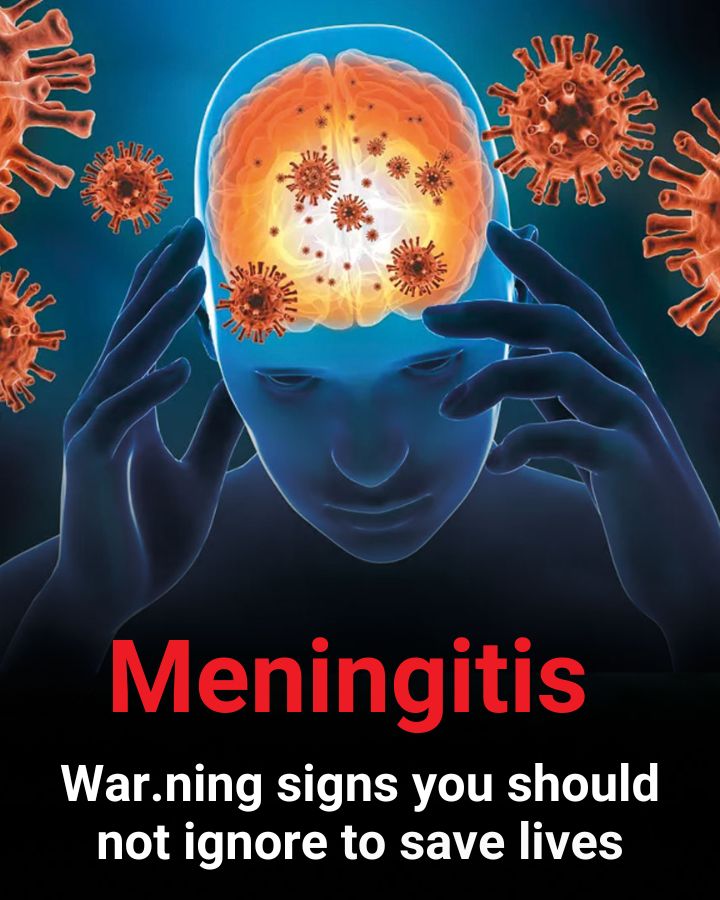
Meningitis is a serious, life-threatening condition that requires urgent medical attention. It occurs when the membranes surrounding the brain and spinal cord—known as the meninges—become inflamed, usually due to an infection. Without early treatment, meningitis can quickly lead to severe complications, including brain damage, hearing loss, or even death.
Unfortunately, meningitis can strike quickly and often begins with symptoms that are easy to confuse with less serious illnesses like the flu. That’s why it’s critical to know the early warning signs and act fast if you or someone you love starts showing them.
Here’s everything you need to know about spotting the early symptoms of meningitis—and why paying attention could save a life.
What Causes Meningitis?
Meningitis can be triggered by several different causes, but the most common culprits are viral and bacterial infections.
-
Viral meningitis tends to be less severe and often clears up without specific treatment.
-
Bacterial meningitis, however, is extremely dangerous and can become fatal within hours if not treated promptly with antibiotics.
Less commonly, meningitis can also be caused by fungal infections, parasites, or even certain medications or medical conditions.
Knowing the cause is important, but recognizing the symptoms early matters even more.
Early Symptoms of Meningitis: What to Watch For
Meningitis symptoms can develop suddenly and worsen very quickly. While the signs may vary depending on a person’s age and the specific cause of the infection, several key symptoms are commonly associated with meningitis:
1. Severe Headache
One of the earliest and most persistent signs of meningitis is a sudden, intense headache that doesn’t go away with normal pain relievers. This headache is often described as different from any headache the person has experienced before—sharp, throbbing, and overwhelming.
2. Stiff Neck
Another hallmark symptom is an extremely stiff neck that makes it painful or impossible to touch the chin to the chest. This stiffness happens because the meninges are inflamed and irritated.
3. High Fever
A rapid spike in body temperature often accompanies meningitis. The fever may be very high, and it’s usually resistant to typical treatments like over-the-counter fever reducers.
4. Sensitivity to Light (Photophobia)
People with meningitis often experience extreme sensitivity to light, making it painful to open their eyes in bright environments.
5. Nausea and Vomiting
Nausea, vomiting, and a general feeling of sickness can also occur as pressure builds inside the skull.
6. Confusion and Difficulty Concentrating
As the infection progresses, brain function can become impaired. This may lead to confusion, difficulty focusing, drowsiness, and even unresponsiveness in severe cases.
7. Seizures
In some cases, meningitis can trigger seizures, even in people with no previous history of them.
8. Sleepiness or Difficulty Waking Up
Excessive sleepiness, difficulty waking, or a noticeable decline in responsiveness should be treated as emergency warning signs.
9. Skin Rash
Particularly with meningococcal meningitis (a bacterial form), a distinctive purplish rash that doesn’t fade when pressed may appear. This is a medical emergency.
Symptoms in Infants and Young Children
Meningitis can be especially difficult to detect in babies and toddlers. Look out for:
-
Bulging of the soft spot (fontanelle) on a baby’s head
-
High-pitched crying or irritability
-
Poor feeding
-
Vomiting
-
Seizures
-
Stiffness in the body or floppy limbs
-
Difficulty waking or extreme sleepiness
Because young children can’t always communicate how they feel, parents and caregivers need to stay vigilant for subtle changes in behavior and appearance.
Why Early Diagnosis Matters
With meningitis, time is everything. The earlier the infection is diagnosed and treated, the better the chances for a full recovery without long-term effects.
Delays in seeking treatment can lead to devastating complications, including:
-
Brain swelling
-
Hearing loss
-
Memory problems
-
Learning disabilities
-
Kidney failure
-
Shock and death
If you notice any combination of the symptoms listed—especially if they escalate rapidly—don’t wait. Seek immediate medical attention. It’s far better to err on the side of caution when meningitis is suspected.
How Meningitis Is Diagnosed and Treated
Doctors typically diagnose meningitis by performing a physical examination and conducting tests like:
-
Blood cultures
-
Imaging (such as a CT scan)
-
A lumbar puncture (spinal tap) to examine the cerebrospinal fluid
Treatment depends on the cause. Bacterial meningitis requires urgent intravenous antibiotics and sometimes corticosteroids to reduce inflammation. Viral meningitis may be treated with supportive care, such as fluids, rest, and pain relievers.
Vaccines are also a key tool in preventing certain types of bacterial meningitis, especially among infants, teenagers, and young adults.
Final Thoughts: Stay Informed, Stay Safe
Meningitis is a frightening and serious illness, but knowing the signs can make all the difference. Trust your instincts—if something feels wrong, seek help immediately.
Early action can mean the difference between life and death, or between full recovery and long-term health issues. Share this information with your family and friends—you never know when it might save a life.
Stay vigilant. Stay informed.
And remember: when it comes to meningitis, every second counts.





